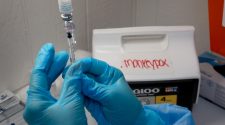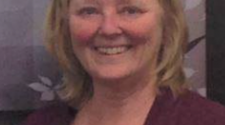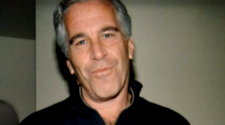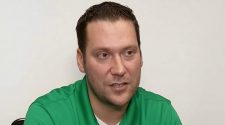Image source: The Motley Fool.
Health Catalyst Inc (HCAT -37.88%)
Q2 2022 Earnings Call
Aug 04, 2022, 5:00 p.m. ET
Contents:
- Prepared Remarks
- Questions and Answers
- Call Participants
Prepared Remarks:
Operator
Good day, ladies and gentlemen, and thank you for standing by. Welcome to the Health Catalyst, Inc. second quarter 2022 conference call. At this time, all participants are in a listen-only mode.
After the speakers’ presentation, there will be a question-and-answer session. [Operator instructions] At this time, I’d like to turn the conference over to Mr. Adam Brown. Sir, please begin.
Adam Brown — Senior Vice President, Finance and Investor Relations
Good afternoon, and welcome to Health Catalyst’s earnings conference call for the second quarter of 2022, which ended on June 30, 2022. My name is Adam Brown. I’m the senior vice president of investor relations and financial planning and analysis for Health Catalyst. And with me on the call is Dan Burton, our chief executive officer; and Bryan Hunt, our chief financial officer.
A complete disclosure of our results can be found in our press release issued today, as well as in our related Form 8-K furnished to the SEC, both of which are available on the Investor Relations section of our website at ir.healthcatalyst.com. As a reminder, today’s call is being recorded, and a replay will be available following the conclusion of the call. During today’s call, we will make forward-looking statements pursuant to the safe harbor provisions of the Private Securities Litigation Reform Act of 1995 regarding trends, strategies, the impact of the COVID-19 pandemic and the high inflationary environment on our business and results of operations, our pipeline conversion rates and our general anticipated performance of the business. These forward-looking statements are based on management’s current views and expectations as of today and should not be relied upon as representing our views as of any subsequent date.
We disclaim any obligation to update any forward-looking statements or outlook. Actual results may materially differ. Please refer to the risk factors in our Form 10-Q for Q1 2022 filed with the SEC on May 10, 2022, and our Form 10-Q for Q2 2022 that will be filed with the SEC. We will also refer to certain non-GAAP financial measures to provide additional information to investors.
A reconciliation of these non-GAAP financial measures to their most comparable GAAP measures is provided in our press release. With that, let me turn the call over to Dan for his prepared remarks, and then Bryan will subsequently provide his prepared remarks. Dan and Bryan will then take your questions. Dan?
Dan Burton — Chief Executive Officer
Thank you, Adam, and thank you to everyone who has joined us this afternoon. I am happy to share that our Q2 2022 revenue came in at the high end of our guidance range and that our Q2 2022 adjusted EBITDA outperformed the top end of our guidance range. While we are pleased with these Q2 results, we are disappointed that, as we referenced in our earnings release this afternoon, we are revising down our revenue and adjusted EBITDA outlook for the full year. Although I will spend the majority of my prepared remarks commenting on how our end market dynamics are impacting our bookings performance, I first want to take a moment to set the broader context.
As we have entered our fourth year as a public company, I continue to have confidence in our ongoing position as the market leader in data and analytics technology and services that drive measurable improvement. Our engaged and committed team members, our deep customer relationships, our ROI-centric value proposition, and our strong balance sheet leave us well-positioned to be the long-term market leader in an industry that is still early in its adoption of commercial-grade data and analytics technology and services. Likewise, as we navigate a challenging macroeconomic environment, we are committed to operating with financial discipline. As such, while our near-term growth is impacted by the macroeconomic pressure on our end market, we are confident in our ability to drive meaningful, positive adjusted EBITDA in 2023 and beyond.
With that, let me walk through the three main drivers that caused us to reassess our full-year growth outlook. First, our health system end market is currently experiencing meaningful financial strain, in which they have realized significant increases in labor and supply costs without a commensurate increase in revenue, leading to substantial margin pressure. As a result, our sales cycles have elongated and our first-half bookings achievement was materially lower than anticipated, impacting both our new customer additions and our dollar-based retention metrics. Importantly, through the first half of 2022, we have maintained a robust pipeline and have not seen a material negative impact on our win rates.
However, what we have observed is that many healthcare organizations are delaying near-term purchasing decisions as they reevaluate budgets given their financial situation. Additionally, in a few instances, we are experiencing customers trimming back their near-term spend with Health Catalyst in an effort to meet shorter-term budget cut requirements. Within our Professional Services segment, this has translated to a subset of customers, modestly reducing the number of FTEs engaged in their initiatives. While in the Technology segment, this has mostly translated to a small subset of modular customers lowering their application and analytics spend.
In many ways, we would characterize the selling environment in the first half of 2022 as similar to what we experienced in the first half of 2020 when significant economic challenges related to COVID-19 resulted in many of our customers and prospects pausing their purchasing decisions and some customers reducing their spend with Health Catalyst as they worked through near-term rebudgeting exercises. Just as we saw our customers stay with Health Catalyst through the worst financial aspects of the COVID-19 pandemic and then choose to expand their relationships in 2021, we believe our long-term partnership orientation with our customers will, over time, provide opportunities for meaningful future expansion in those relationships. The second driver of our revised 2022 outlook is the loss of a large enterprise DOS customer. While this event is certainly unfortunate, as a reminder, our historical gross customer retention has been extremely high, especially among our enterprise DOS customer base.
And based on our engagement with existing customers, we believe this was an isolated customer-specific event. As context, this customer was added shortly after the onset of the COVID-19 pandemic. This customer’s recent decision to bring their analytics function in-house was primarily driven by near-term cost savings needs in light of their significant financial pressure. We also acknowledge that we could have performed better in our implementation and time to value, and we have taken active steps to learn from this experience and improve.
Importantly, we have not experienced this feedback as an overall trend from our customers. The third driver of our revised 2022 outlook relates to our decision to pause our investments in the life sciences adjacent market outside of continuing to provide our Twistle patient engagement solution. While we continue to believe there is a long-term opportunity to leverage our robust data asset within the life sciences end market, our investment over the last few years has not played out as meaningfully as we had forecasted. The life sciences adjacency previously accounted for a few million dollars in our 2022 revenue forecast that we no longer expect to achieve.
Additionally, it will result in the loss of a few DOS subscription customers, each with relatively low ARR values. We believe this strategic decision will bolster our efforts to concentrate on our core value proposition, prioritize continued progress toward profitability and drive operational focus, including allowing us to reallocate a subset of this investment toward our core product road map. As we continue to invest in core data and analytics technology infrastructure, we are building this infrastructure with life sciences use cases in mind, keeping open the possibility of future reinvestment in the life sciences market. Moving on to commentary on the second half of 2022.
We are proactively responding to the challenging macroeconomic environment and near-term topline pressure with a focused, prioritized operating plan. First, I would emphasize that we are strategically focusing our operations to enable continued meaningful operating leverage. This operational focus includes, as mentioned previously, pausing our investment in the life sciences adjacent market, as well as reducing our investment levels in other areas. This also includes further expanding our offshore delivery capabilities enabling greater savings in certain operating expense and delivery functions.
Next, I would highlight that we are continuing to make several strategic investments to continue to position ourselves as a market-leading data platform and focus on providing our customers with a strong ROI through our technology and services offerings. Related to our data platform, we have made meaningful recent investments in high-value data and analytics to enable faster time to value and greater scalability. On time-to-value, our investment has and will continue to focus on plug-and-play data acquisition enablement, enhanced data quality, embedded AI and machine learning capabilities, and an extensible unified data model. And as it relates to scalability, our investment will continue to focus on modern architecture capabilities, including stilt-like enablement, elastic compute, and event-driven processing.
All of these data platform capabilities enable our clients to more quickly and effectively use data and analytics to make more data-informed decisions and measurably improve. Given the financial pressure that health systems are currently facing, we are also prioritizing investments in applications and services that we believe have a clear financial ROI, such as our Financial Empowerment Suite, a population health suite, and our tech-enabled outsourced services. We are prioritizing these solutions in our conversations with prospective clients, and we are encouraged to see meaningful and positive responses to these offerings in our current pipeline. In the second half of 2022, we anticipate we will see an improvement in our pipeline conversion rates and timelines relative to the first half of the year, though there will likely continue to be some amount of strain on our near-term conversion rates given the ongoing end market financial pressure.
Next, let me share a few comments on the implications of these updates for the second half of 2022 and beyond. We are lowering our full-year 2022 revenue outlook, which Bryan will cover in more detail. Importantly, however, our adjusted EBITDA guidance is only minimally impacted relative to the revenue guidance revision as we have quickly adjusted our operating plan to balance the lower growth forecast and enable continued operating leverage. In terms of our 2022 bookings outlook, we now anticipate our dollar-based retention will be in the mid to high 90s and that our net new DOS subscription additions will be in the mid to high single-digits.
And though we are not sharing specific guidance related to our 2023 outlook today, we do anticipate that our 2023 revenue growth rate will be materially impacted by the lower bookings performance in 2022 as compared to previous expectations. Even with a lower growth profile in 2022 and 2023, we are committed to realizing positive adjusted EBITDA in 2023 and anticipate similar adjusted EBITDA annual margin improvement in 2023 as we are expecting in 2022, namely approximately 300 basis points of improvement. We aim to realize this continued profitability improvement through a combination of operational focus and cost optimization. As we look beyond 2023 and acknowledge that the macro environment is evolving and that our end market remains challenging, we remain confident in our ability to achieve our long-term adjusted EBITDA target of 20% plus.
Additionally, as we enter our fourth year as a public company and having demonstrated our ability to achieve our adjusted EBITDA breakeven timeline set out at the time of our IPO, today, we are providing a midterm target of 10% adjusted EBITDA margin and positive free cash flow in 2025. We believe this margin target still allows us to make the level of investment required to maintain our long-term strategic differentiation and market leadership while also beginning the realization of meaningful free cash flow generation. On a related topic, let me now share that our board of directors has authorized a share repurchase program which allows us to repurchase up to $40 million of our outstanding shares. As we evaluated our corporate finance options informed by our strong cash position and our high level of conviction in our path to meaningful free cash flow generation for full year 2025, we determined that a share repurchase program would create value for our shareholders by allowing us to opportunistically repurchase a subset of our shares with the recognition that current share prices do not match our view of the long-term value of shares of the company’s stock.
Given the size of the repurchase program relative to our overall cash balance, we also maintain the ability to utilize our balance sheet to conduct opportunistic future M&A. We will continue to be disciplined in our M&A evaluation process, requiring acquisitions to be both strategically and financially compelling for Health Catalyst. While in the near term, we anticipate M&A is less likely given the market dynamics and ongoing disconnect between public and private market valuations and our intention to drive additional focus and execution against our current offerings, we continue to believe M&A will contribute to our long-term strategy. Before I turn the call over to Bryan, let me also take a couple of moments to share a few positive company updates from the second quarter.
First, I’d like to highlight our team member engagement. Approximately every six months, we utilize the Gallup organization to measure our team members’ engagement levels. In our most recent results, we achieved an overall team member engagement score in the 97th percentile. This latest engagement level continues a pattern that has been in place for many years of industry-leading team member engagement consistently ranking between the 95th and 99th percentile in overall team member engagement scores.
We, as a leadership team, continue to maintain a primary prioritized focus on team member engagement, the center of our strategic flywheel because we recognize the central and foundational contributions that our team members make in building the software and providing the services expertise that enable our customers to achieve massive, measurable improvement. Second, we have been encouraged to see another of our solutions, power costing, recently record meaningful improvement in customer satisfaction toward industry-leading levels as measured by the KLAS Organization. These Gallup and KLAS results are encouraging confirmation of our prioritization and focus. Additionally, in June, we, as a company, celebrated publishing our 300th customer improvement case study.
These 300 customer-approved case studies have documented a total of $1.5 billion in validated measurable improvements and 5.4 million lives positively impacted. And these 300 published case studies represent a small fraction of the measurable improvements that our customers have realized as a result of their partnership with Health Catalyst. Lastly, we are excited to have publicly announced two of our recent customer additions. First, I am happy to share that our new relationship with LifePoint Health will allow them to leverage our robust technology offering along with our professional services expertise to support their efforts to reduce their variation in clinical outcomes, improve their overall quality of care and drive toward their population health goals.
Next, we’re pleased to share that Akron Children’s Hospital will leverage our data platform in population health software along with our professional services expertise to improve their patient experiences and outcomes, personalized value-based care, create operational efficiency and compete more effectively in their marketplace. We are honored to have the opportunity to serve these two leading healthcare organizations. And we believe these new relationships highlight our industry-leading solution, the importance of our value proposition and that the breadth of our offering enables us to effectively serve clients across the healthcare ecosystem. With that, let me turn the call over to Bryan.
Bryan?
Bryan Hunt — Chief Financial Officer
Thank you, Dan. For the second quarter of 2022, we generated $70.6 million in total revenue. This total represents an outperformance relative to the midpoint of our guidance, and it represents an increase of 18% year over year. Technology revenue for the second quarter of 2022 was $45.4 million, representing 28% growth year over year.
This year-over-year growth was driven primarily by recurring revenue from new customer additions, from existing customers paying higher technology access fees as a result of contractual built-in escalators, as well as from our Twistle acquisition that closed on July 1, 2021. Professional Services revenue for Q2 2022 was $25.2 million, representing 5% growth relative to the same period last year and a decrease of 2% relative to the first quarter of 2022. For the second quarter 2022, total adjusted gross margin was 54.7%, representing an increase of approximately 35 basis points year over year. In the Technology segment, our Q2 2022 adjusted Technology gross margin was 70.4%, an increase of approximately 215 basis points relative to the same period last year.
This year-over-year performance was mainly driven by existing customers paying higher technology access fees from contractual built-in escalators without a commensurate increase in hosting cost, partially offset by headwinds due to the continued cost associated with transitioning a portion of our customer base to third-party cloud-hosted data centers in Microsoft Azure, which increases our hosting costs. In the Professional Services segment, our Q2 2022 adjusted Professional Services gross margin was 26.5%, representing a decrease of approximately 740 basis points year over year and a decrease of approximately 275 basis points relative to the first quarter of 2022. This quarter-over-quarter decline is in line with the expectations we shared on our last earnings call. In Q2 2022, adjusted total operating expenses were $36.7 million.
As a percentage of revenue, adjusted total operating expenses were 51.9%. Adjusted EBITDA in Q2 2022 was positive $2 million, with this performance beating the top end of our guidance and comparing favorably to an adjusted EBITDA gain of $1.7 million in the second quarter of 2021. This Q2 2022 adjusted EBITDA outperformance relative to guidance was mainly driven by the strong quarterly revenue performance without a commensurate increase in expenses, along with delays in the timing of some nonheadcount expenses that we anticipate will now occur in the second half of 2022. Our adjusted net loss per share in Q2 2022 was $0.03.
The weighted average number of shares used in calculating adjusted net loss per share in Q2 was approximately 53.7 million shares. Turning to the balance sheet. We ended the second quarter of 2022 with $403 million of cash, cash equivalents, and short-term investments, compared to $445 million at year-end 2021. As a reminder, our first half 2022 cash balance is reflective of the approximately $28 million of cash payments related to our two recent acquisitions of KPI Ninja and ARMUS.
Also, as a note, the face value of our outstanding convertible notes is a principal amount of $230 million and the net carrying amount of the liability component is currently $225.8 million. As it relates to our financial guidance for the third quarter of 2022, we expect total revenue between $65.3 million and $68.3 million and adjusted EBITDA losses between $6 million and $4 million. And for the full year 2022, we now expect total revenue between $271.5 million and $275.5 million and adjusted EBITDA losses between $6 million and $4 million. Now, let me provide a few additional details related to our 2022 bookings expectations and financial guidance.
Year to date, our dollar-based retention rate has been in the low 90s, driven by the dynamics Dan shared, including the loss of a large enterprise DOS contract, a subset of more narrowly scoped modular customers reducing their technology spend, and modest professional services FTE trimming across a subset of our customer base. In terms of our full-year 2022 expectation, we now anticipate our dollar-based retention rate, inclusive of both Technology and recurring Professional Services to be in the mid- to high 90s. In the first half of 2022, we added a few net new DOS subscription customers, which was lower than our previous expectations. We now anticipate that our net new DOS subscription customer additions will be in the mid to high single-digits range for the full year 2022.
Consistent with Dan’s remarks, this implies that we are — that we expect our bookings performance for the remainder of the year to improve, especially when considering the expected wind-down of a few life sciences DOS subscription customers with low average ARR value. In terms of our full-year 2022 year-over-year revenue growth by segment, we now expect the Technology segment to grow a little less than 20% and for the Professional Services segment to grow in the mid-single digits. In terms of Q3 revenue expectations, we anticipate that both our Technology revenue and Professional Services revenue will decline a few percentage points sequentially. This quarterly Technology revenue dynamic is driven by the items Dan highlighted previously, with our Technology dollar-based retention being in the low 90s percent range year to date, inclusive of the large enterprise DOS customer loss that accounted for a little over $1 million per quarter, along with some more modular reductions in our customers’ application and analytics spend.
Additionally, related to the Technology segment, there was an outsized deferred revenue catch-up in Q2 related to a project implementation that accounted for approximately $1 million of revenue that will not reoccur in Q3. The third quarter Professional Services sequential revenue decline is driven primarily by our first-half dollar-based retention performance, where customers, on average, trim back their usage of our Professional Services team members. Next, in terms of our adjusted gross margin, we continue to anticipate that our adjusted Technology gross margin will be in the high 60s for the next two quarters. In the Professional Services segment, we now anticipate that Professional Services adjusted gross margin will decline to approximately 20% in the second half of 2022, mainly driven by lower anticipated utilization rates as our staffing levels have not yet rebalanced with our downward revised revenue forecast.
Additionally, this Professional Services margin pressure is driven by the anticipated mix of services to be delivered in the second half of the year. Lastly, and consistent with what we shared on our last earnings call, we continue to expect seasonality in our operating expenses, especially in the third quarter related to the — to our Healthcare Analytics Summit, which accounts for approximately $3 million of in-quarter sales and marketing expense, as well as the timing of certain other nonheadcount operating expenses throughout the year. Lastly, we anticipate that the cost efficiencies Dan referenced pertaining to our updated and prioritized operating plan will drive savings as we enter into 2023, although some of the cost savings initiatives will not be completed until toward the end of Q4 2022. With that, I will conclude my prepared remarks.
Dan?
Dan Burton — Chief Executive Officer
Thanks, Bryan. In conclusion, I would like to recognize and thank our highly engaged team members for their continued engagement, commitment, and dedication even in challenging macroeconomic circumstances. And with that, I will turn the call back to the operator for questions.
Questions & Answers:
Operator
[Operator instructions] Our first question or comment comes from the line of Anne Samuel from J.P. Morgan.
Anne Samuel — J.P. Morgan — Analyst
Hi. Thanks for taking the question. I was hoping maybe you could provide just a little bit of color on the enterprise customer that you lost, how big it was? Was it a nonrenewal or did they break a contract? And maybe just a little bit of color on what the rationale was there for them deciding to move on.
Dan Burton — Chief Executive Officer
Yeah. Happy to address that thing, Annie. So, as we mentioned in the prepared remarks, this was a recent large enterprise DOS subscription client that we added during the COVID-19 pandemic, during the early stages of the pandemic. And one of the challenges that we faced as a result of not being able to do any sort of in-person implementation and the team-related actions was some delays in the actual implementation of the data platform.
And we have learned from those delays as it relates to that implementation process. And there were a couple of specific elements that happened there. First, it took longer than we anticipated and longer than it normally takes to get the data platform up and running and an important part of the ROI associated with partnering with Health Catalyst is the ability to sunset other data infrastructure and the delays in being in a position to sunset that homegrown data infrastructure was one challenge. And the delays also then impact our ability to get to the use of the data analytics to drive measurable improvements from a financial ROI perspective.
And so, as the financial pressures then came into this health system client and we hadn’t yet gotten to the point where we’d retired and realized some savings from the homegrown system, they made the decision to get to the savings another way through the ending of the relationship. That was certainly unfortunate for us. It has been an isolated incident, and we’re striving to learn from that experience. As Bryan mentioned in the prepared remarks, this is a client that represented a little over $1 million a quarter in terms of the subscription value of the contract.
Bryan Hunt — Chief Financial Officer
That’s right, Dan, yeah. And just to add to that, Annie, so for us, in terms of the size, you could think about it as roughly a little over $6 million of ARR value, most of which is on the Technology side. So, it is a material customer for us. It’s getting to that as a top 10 customer across our enterprise customer base.
And this was essentially, to Dan’s point, a nonrenewal that they came up upon and decided to shift toward the in-house kind of option there.
Anne Samuel — J.P. Morgan — Analyst
OK. Thank you. That’s helpful color. And then I was hoping you could maybe just talk about the decision to initiate a share repurchase program versus investing in the business, doing M&A? What catalyzed that? And what went into that decision?
Dan Burton — Chief Executive Officer
Absolutely. So, as we thought about our capital strategy as a board and as a leadership team, one of the things that we benefit from is a very strong balance sheet with ending the second quarter with over $400 million of cash and cash equivalents. And as we have an updated view of the M&A landscape and environment and an updated view of our progression toward profitability and the establishment of positive free cash flows, we feel comfortable with a modest share repurchase program in that up to $40 million range that reflects our view that the current value of the shares has a disconnect between that and the intrinsic value that we believe exists in the shares and therefore, represents a good use of our capital to reduce some of the dilution that’s occurred since the IPO. And likewise, still leave us with a very strong balance sheet and the ability to continue to pursue M&A in a financially disciplined and strategically disciplined manner like we’ve tried to do these last several years as a company as well.
So, those were some of the elements, I think, also informed by the fact that we continue to make really meaningful progress from a profitability perspective, and we have confidence in our ability, even in a near-term slower growth environment to continue to make that really meaningful profitability progress. And as such, we have the balance sheet strength that we need and the room to receive that board authorization for a share repurchase.
Anne Samuel — J.P. Morgan — Analyst
That’s great color. Thank you.
Operator
Thank you. Our next question comment comes from the line of Jared Haase from William Blair.
Jared Haase — William Blair — Analyst
Thanks for taking the questions. I guess — I appreciate all the detailed commentary here about kind of the revised outlook. I guess maybe just sticking with that point for my first question. I’m just sort of curious, I guess, what change that you’re seeing in the end market? Because I think a lot of these financial strain issues are thinking about labor and workforce and supply chain.
I think a lot of those have been present now for a couple of quarters. And so, I’m just sort of curious what you saw in the market that was maybe incremental or new that led to the revision in your outlook? And I guess it’s possible, but it has to do with Q2 being kind of more of your heavy selling season. So, those impacts were just a little bit more pronounced during those conversations. But just curious to hear any thoughts around that first.
Dan Burton — Chief Executive Officer
Yeah. Happy to share a few thoughts, Jared. So, one of the dynamics that’s been interesting for us to observe with our health system clients is that actually, 2021 was a fairly strong and robust year financially for most of our health system clients. And it was a combination of factors that influenced that.
But coming into 2022, there were a couple of factors that were hard to anticipate. We are hearing some keyboard typing, by the way, in the background. I don’t know if others can go on mute. There we go.
Perfect. Thank you. So, there were a couple of factors that coming into 2022 were hard to anticipate. One of them was the spike in the Omicron variant of COVID-19, which had a material meaningful negative impact on the financial performance of these health systems.
And likewise, as they’re — came into focus a better sense for the impact of much higher labor costs and much higher supplies cost through inflationary pressure, along with the fact that the annual increases on the revenue side were much more modest. That’s when our observation and discussions with our health system clients was that the first half of the year was really when they discovered that many of them were underwater financially from an operating margin perspective. And as a result, really late in Q2 is when we started to find that any of our clients and prospective clients are starting to put into place mitigating measures to try to adjust for the fact that they were struggling from a financial perspective. We’re also still hearing that keyboard noise in the background, by the way.
And so, late in Q2 is really, Jared, when we started to hear more of our clients trying to adjust to that reality of being underwater from a financial pressure perspective and having a dialogue with us about how to work their way through. Our observation is that — the financial pressures are starting to subside. We’re seeing some anecdotal evidence. And I think there’s some third-party research that suggests that health systems’ financial circumstances are improving but that can take time, and that appears to be a more gradual improvement.
And so, we’ve tried to be sensitive to that as we think about our projections for the second half from a bookings’ perspective and moving into 2023 as well.
Bryan Hunt — Chief Financial Officer
Just to add to that, Dan and Jared, so Dan mentioned on the prepared remarks, Jared, but we’re also, as part of our updated thinking around the operating plan and where we’re investing and kind of deemphasizing, we’re continuing to emphasize areas from a sales and marketing and a solution development standpoint that speak more to near-term financial ROI and savings opportunities for our customers and prospects. And those include things like our Financial Empowerment Suite, revenue cycle offerings, cost and labor offerings, some of our population health offerings that speak more toward financial ROI, as well as some of our outsourced services offerings that can offer near-term savings. So, those will be areas that as we move forward in a prioritized way, in a disciplined way with our spend that we’ll continue to emphasize in this type of end market environment.
Jared Haase — William Blair — Analyst
[Inaudible] all of the context. And then I guess just one quick follow-up for me. And I appreciate some of the longer-term commentary you gave around EBITDA and free cash flow by 2025, I believe, was the target. I just wanted to add a little later to that.
Is there an underlying assumption for organic growth there? Is that sort of predicated to getting back to kind of your normalized expectation that used to be kind of in the 20% range? Is it predicated on getting back to that at a certain point in time? Or does it kind of assume that maybe some of these headwinds persist for a while that you maybe continue in a little bit of a slower growth environment?
Dan Burton — Chief Executive Officer
Yeah. Great questions, Jared. So, as we made that commitment, it was with an understanding and realization that some of these financial pressures that our health system clients are facing will take some time to work their way through. Now today, we’re not changing that long-term perspective that we’ve shared in the past of that 20-plus percent growth trajectory, but we are recognizing that it may take some time to ramp back up to that kind of growth trajectory.
And our commitment from an EBITDA perspective and a free cash flow perspective is a commitment that crosses across a spectrum of ways in which that ramp may occur from a growth perspective. So, it’s not dependent on any specific growth scenario. We’re making that commitment that we can achieve that EBITDA margin percentage of 10% and be free cash flow positive even in a lower growth scenario than that long-term growth — long-term organic growth perspective of 20-plus percent.
Bryan Hunt — Chief Financial Officer
And just to add to that, Dan, so in the prepared remarks, Jared, we did share that we do expect an impact on our growth rate into 2023 based on this updated bookings’ expectation for 2022, which kind of in our recurring revenue model rolls on to the P&L next year. And we’re not giving a specific range there on 2023 yet because there are a few factors that will play into that, including our bookings performance next year, which generally, we’d expect to improve as health systems’ financial situation continues to improve. So, we do view 2023 as a trough year, a low point in terms of our revenue growth profile. But to Dan’s point, we expect to ramp back up.
And as Dan mentioned, that exact ramp is a little bit hard to determine based on the macroeconomic environments. But as you said, generally expect to continue to ramp, you know, toward that long-term growth rate.
Jared Haase — William Blair — Analyst
Thanks again for all the color.
Dan Burton — Chief Executive Officer
Thank you.
Operator
Thank you. Our next question or comment comes from the line of Elizabeth Anderson from Evercore.
Elizabeth Anderson — Evercore ISI — Analyst
Thank you so much for the question. You mentioned some customers sort of cutting services or sort of rethinking through how they’re working with you. Could you provide a little bit more color on sort of how that’s generally been impacting? And I don’t know if it’s — if you have this number at your fingertips, but do you have the dollar-based retention number like ex that one customer loss?
Dan Burton — Chief Executive Officer
Yeah. Thanks for the question, Elizabeth. So, I’ll speak to the first item, and then, Bryan, if you’d like to add any specific commentary as well. So, as we mentioned in the prepared remarks, we continue to benefit from long-standing deep relationships with our enterprise DOS subscription clients, many of whom have more of an enterprisewide subscription to our solutions, and that continues to be very robust.
But as we mentioned in the prepared remarks, we have seen among some of our more modular clients some trimming back both on the technology side for those modular clients. And then more broadly, with regards to our services, we have seen a little bit of trimming back in terms of the number of FTEs that our clients are requesting during this temporary time of more elevated financial pressure. As we mentioned in the prepared remarks, that reminds us in a number of ways to the pressure that our clients were under in the first half of 2020. And one difference between now and 2020 is we haven’t been offering any discounts from a Professional Services perspective, but we are seeing some similar trimming back among our broader client base on the Professional Services side.
And then outside the one enterprise DOS subscription client churn that we referenced earlier, the other category of technology reduction that we’re seeing is more in that modular client space, which as we’ve mentioned previously, we’ve always known is a little bit different space where they’re not quite as deeply committed to Health Catalyst long term as compared with those more broad enterprise DOS subscription clients.
Bryan Hunt — Chief Financial Officer
And just to add to that, to your question, Elizabeth, the — if you think about kind of the impact of that enterprise DOS customer on our retention rate. So, historically, our retention rates have been in the 107% to 109% range, a little higher than that last year. The enterprise DOS customers a few points, you could think about as the impact to that retention rate. And then as we shared, our overall expectation for 2022 is to be in the mid- to high 90s for our dollar-based retention rate across technology and services.
And so the difference there would be the type of kind of trimming that Dan is mentioning on the tech side, the modular customers in particular. And on the services side, more just kind of rebudgeting exercises and on average, kind of a pullback in terms of the usage of our FTEs.
Elizabeth Anderson — Evercore ISI — Analyst
Got it. That’s super helpful. And just — I heard you that unlike in the COVID time, you guys are not changing pricing right now. It’s just sort of like a reduction in FTEs, but you’re not that temporary discount that obviously you gave to people in the height of COVID, that is not something that you, A, done, or is that, B, something that you would contemplate?
Dan Burton — Chief Executive Officer
It’s not.
Bryan Hunt — Chief Financial Officer
Yes. And it is a little bit — we still enable that flexibility, as you know, Elizabeth, especially on the services side where customers can ramp up and ramp down their FTE usage with us. And so, that’s more so what we’re seeing is, on average, just a little bit of trimming in terms of the usage of our team members.
Elizabeth Anderson — Evercore ISI — Analyst
Got it. Thank you.
Dan Burton — Chief Executive Officer
Thanks, Elizabeth.
Operator
Thank you. Our next question or comment comes from the line of Stephanie Davis from SVB Securities. Ms. Davis, your line is open.
Stephanie Davis — SVB Leerink — Analyst
Thank you. Open to a comment as well, look at that. So, I’m curious because we’ve been kind of A Tale of Two Cities. You had a number of large wins intra-quarter, but the macro comment there in the call has been very muted.
Was there any reason some of these very large systems were getting across the finish line? Was this a last-minute sprint or a greater need in this macro backdrop for your CFO-facing solutions? Or was it just kind of a coincidence that everything closes all at once?
Dan Burton — Chief Executive Officer
Yeah. Great comments/questions, Stephanie, insightful question. So, I think there were a couple of factors. And as you know, we try to be data-informed, and this is still a small end.
And so, we don’t want to over-extrapolate. But as it relates to some of the recent customer wins that were announced like, for example, LifePoint was a large contract and a larger relationship. And that’s a relationship that we’ve been contemplating and discussions that we’ve been having for multiple years with LifePoint. And we actually were familiar with them in terms of providing them with some services through our interoperability solutions.
But that’s been a multiyear conversation with them. It is true, however, that components of our solution that were of particular interest to them are also very helpful within a financially strained environment. And they did, I believe, appreciate the fact that we had some near-term hard dollar ROI opportunities to help them navigate through this particular time frame. But also, I think, informed in our multiyear discussions was a desire to have a very long-term deep partnership with them, consistent with what we strive to do with each of our enterprise DOS subscription clients.
And that seemed to be more of a consistent theme that we see through different economic cycles that wasn’t particularly specific to what health systems are experiencing today.
Stephanie Davis — SVB Leerink — Analyst
So, with that in mind, what does that do to your philosophy on headcount? Is it possible to rebadge some folks from one project to another as the macro backdrop is around? Or more of a need to cut back and push you a different sort of focus area for the current environment?
Dan Burton — Chief Executive Officer
Yeah. So, as you know, Stephanie, we care deeply about our team members, and we do keep a focus, a central focus on that relationship with our team members and strive to find ways from a cost perspective, a cost management perspective, to continue our relationship with our team members and to prioritize that. It doesn’t always work out like the decision to pause the life sciences business, for example, as you might imagine, impacted team members. But we’ve tried to — Health Catalyst over many years to be very thoughtful and careful about doing all that we can to continue that relationship with team members.
So, for example, in the Professional Services space, even though our utilization rates were a little below in the near term where we would have forecasted consistent with Bryan’s prepared remarks, we plan to just grow into the right utilization levels there rather than a near-term layoff for example. And that’s consistent with the approach that we have taken for many years as it relates to our teammates. And likewise, there are some other ways in which we can be flexible in terms of slowing our backfills. I’m in a position, for example, where I could voluntarily and have voluntarily reduced my compensation to help us just bridge through some near-term components of our clients’ experiencing this financial pressure, but then also enabling us to be able to keep moving forward with our team members and then be in a position to continue to make the right investments from an R&D perspective as well.
So, those are some of the actions that we’re trying to take.
Stephanie Davis — SVB Leerink — Analyst
That’s awesome. Good management starts from the top, right? Thank you, guys.
Dan Burton — Chief Executive Officer
Thanks, Stephanie.
Operator
Thank you. Our next question or comment comes from the line of John Ransom from Raymond James. Your line is open.
John Ransom — Raymond James — Analyst
Hey, can you hear me?
Dan Burton — Chief Executive Officer
Yes.
John Ransom — Raymond James — Analyst
I’m sorry, I had to dig my phone out. So, just what’s curious to me at least is the pause now from the hospital. Hospitals not know they’ve been under distress. So, why are they now halting? Do you think it’s the burn-off of COVID money? Because this seems like this should have happened a year ago or more.
So, what’s happening now that’s different than a year ago?
Dan Burton — Chief Executive Officer
It’s a great question, John. And I’ve been exploring that in conversations with C-suite executives over the last month to six weeks to try to better understand why is it that now feels different than even three months ago, for example. And here are the kind of the most salient data points that have resonated with us. So, one, there were some elements that were really hard to anticipate, hard to forecast coming off of what turned out to be a pretty robust 2021 for most of our health system clients.
And to your point, John, one of the elements of that robustness was meaningful support from the federal government, for example, in the form of specific COVID-related funds. So, they’re coming off of a robust year in 2021. The Omicron spike in Q1 of 2022 was not something that most organizations, ours included, would have forecasted to the acuity level and the significance that it actually occurred. That was a significant financial component.
And then I think the way in which the very high, in a number of cases, double-digit percentage increases year over year in labor costs and in supplies costs without the commensurate similar support from government subsidies that may have existed in 2020 and 2021 really hit the P&L at the same time for these health system clients in early 2022. And then having a little time to process that that had occurred and realize the extent to which they were underwater, really didn’t hit for most of the health system clients that we work deeply with until sort of late Q2. So that the realization of where they were and the realization of the importance and the need to make financial adjustments really started hitting in sort of the late May into June and July time frames where that was when we started to have those conversations with our clients and prospective clients to say, wow, we need to make some adjustments here to get back above water, to get back above a breakeven operating margin. And our sense, as we mentioned earlier, is we’re seeing progress in terms of the financial health progressing of our — of the health system community, but it’s going to take some time.
And many health system clients that we’re working with are still not quite above breakeven from an operating margin perspective. Progress — and Q2 was better than Q1, certainly, but it’s going to take some time. And so, we wanted to be sensitive to that. We try to take a long-term view of the relationship with our clients and meet them where they are and be helpful with what they need right now.
And that’s why we’ve been willing to support the trimming back of some initiatives, to delay some initiatives, and then also to reemphasize some of the components of our solutions that can deliver more of those near-term hard dollar ROI components like our Financial Empowerment Suite, like tech-enabled outsourcing, for example, to make sure that we’re doing what they need to receive right now.
John Ransom — Raymond James — Analyst
So, the rhythm of hospital capital budgets are — they plan in the fall when you think about 2023. So, do you think it’s ’23 decisions will be informed by the reality of Q1 ’22 and there’ll be constraints? It’s really — we’re probably looking at — probably 2024 before they loosen the purse strings. Or is that an overly bearish reading of the landscape?
Dan Burton — Chief Executive Officer
Well, it’s hard to tell. And I think you’ve got some puts and some takes going on here, John. So, on the negative side, I think there’s a greater realization, like I said, in the May, June, July time frame that early in 2022, there was a lot of financial pressure and a lot of negative operating margins. And so, health systems have a better appreciation for that.
At the same time, they’re also seeing meaningful improvement. And so, that’s a positive factor to inform where they might think about in terms of budgeting for 2023. It’s hard to exactly predict how that will play out. But we’re trying to factor in that there will be some headwinds in the second half.
There will be some headwinds that likely do impact 2023 decision-making. And that’s why we wanted to be a little bit better prepared for this taking some time to work its way through.
Bryan Hunt — Chief Financial Officer
Just to add to that, there are some specific elements to us as well where we would expect improvement in 2023. So, for example, the large enterprise DOS contract loss that we had in the first half, like we mentioned, we do view as an isolated event. We’re highly focused on our project management and implementation time frames for recently added customers. And so, that on its own should be a benefit to us we wouldn’t expect next year.
And so, to Dan’s point, it can take some time, but we’re expecting bookings improvement in 2023 compared to what we’re seeing in 2022.
Dan Burton — Chief Executive Officer
And to that point, John, I would add we would anticipate second half of 2022 bookings’ performance to be better than first half. As we mentioned in our prepared remarks, would anticipate 2023 to likely show some additional improvement. We’re watching and gathering data to understand that at a more detailed level.
John Ransom — Raymond James — Analyst
So, last one for me. I would assume the LifePoint contract is better than the typical hospital system contract. They’re a much bigger organization. So, if we said we didn’t contemplate LifePoint, but we didn’t contemplate this DOS loss that maybe that’s a push.
And so, what’s going on — and that’s an assumption on my part. So, what’s going on in the rest of your commentary is basically just a degradation in the activity among your existing clients that’s also being factored into your guide?
Dan Burton — Chief Executive Officer
Yeah. So, a couple of thoughts there. We are certainly excited about the LifePoint relationship and would agree with the assessment that that’s a large relationship that we’re beginning there with LifePoint and they’re a large health system. And so, that is exciting and put them kind of in that same category as some of the comments that Bryan made about the large client that we recently experienced churn with.
So, I would agree with that general assessment. I think the other piece that we would share as context and detail would be on the technology side, we have seen some trimming back mostly focused around those modular clients that are a little bit less deep in their relationship to Health Catalyst. And then on the services side, just a little bit of trimming back. But we would anticipate, like we experienced in 2020, will come back and that those relationships remain really strong and robust.
And that as the financial health of our health system clients improves, we’ll see more of that expansion opportunity much like we did in 2021 after the worst financial components of COVID-19.
John Ransom — Raymond James — Analyst
Right. Thanks so much for the comments.
Dan Burton — Chief Executive Officer
Thank you.
Operator
Thank you. Our next question or comment comes from the line of Jessica Tassan from Piper Sandler. Your line is open.
Jessica Tassan — Piper Sandler — Analyst
Dan, I’m just curious to know, with respect to the revised — or the revised guidance and some of the tepid comments about the customer base. How have you guys changed your sales strategy or the organization or compensation structure within your sales organization to kind of better suit the end market, if at all?
Dan Burton — Chief Executive Officer
Yeah. Thank you for the question, Jess. So, we are emphasizing and focusing, and prioritizing conversations around those specific solutions that deliver near-term hard dollar ROI with our clients, both with our clients and with prospective clients. And that includes the Financial Empowerment Suite, both from a revenue side, making sure that we’re capturing all the charges that we should be paid for with our chargemaster management solution through the Vitalware acquisition.
And on the cost management side that we’re using power labor, we’re using power costing to really deeply understand how we’re doing with regards to our large cost components that we’re utilizing them, that we’re managing them in the best possible way. And then as we mentioned, with tech-enabled outsourcing, as another example, where we’re seeing the need for these clients to generate budget savings in the near term, and that’s one of the components of that solution for tech-enabled outsourcing as we can guarantee hard dollar budgeted savings within a relatively short period of time through the outsourcing of certain functions like chart of traction. And so, we are shifting our sales teams and our client account teams. We’re focusing on those messages with clients, and we’re trying to provide that support to them to make that shift.
Bryan Hunt — Chief Financial Officer
Another kind of change, Jess, that we’re reemphasizing and focusing on is a little bit less directly tied to kind of the more traditional sales force and team, but it’s actually tied to our — to Dan’s point, our customer success and account management functions where part of what we’re seeing this year to Dan’s earlier comments is some trimming and pullback on the technology side of more modular components to what we do or more narrowly focused scope there. And so, we are reemphasizing and focusing on how can we measure and track and drive improvement and drive progress across all of those customers, including some that are kind of smaller than our typical enterprise DOS customer base. And so, that customer success focus will be a big piece of that going forward to ensure that we continue to drive net expansion in the future.
Jessica Tassan — Piper Sandler — Analyst
Got it. That’s helpful. And then I guess just two quick ones — or two more quick ones for me. As we think about just your like annual recurring revenue or the expansion within existing customers, is that sort of moderating in addition to just net new adds? And then should we think about the average revenue per new customer signed as being sort of lower for the next several quarters or maybe — yes, maybe even into 2023?
Dan Burton — Chief Executive Officer
Yeah. So, a couple of thoughts there. So, we are, as we mentioned in the prepared remarks, seeing a dollar-based retention rate that is lower than what we would have originally forecasted for the year and expecting the mid- to high 90s. And so, that would impact kind of where we are with regards to our existing clients.
We do believe that just like we did see a couple of years ago, as our clients get through their financial pressure, we expect them to continue to expand that relationship over time. But in the near term, that’s what we’re seeing on the existing client side. On the new client side, as was mentioned earlier, some of our recent — new client additions were actually fairly large and larger than our historical averages in some cases. So, I don’t think we would suggest thinking differently about what we’ve communicated historically in terms of the starting point of a new relationship being in that $1.5 million plus range on the new client side.
But rather that we did share in the prepared remarks a lowered number of net new DOS subscription clients for this year. Would you expect that the second half will — or 2022 from a bookings perspective will sort of be the low point for us, which will then translate into a P&L low point from a growth perspective in 2023 and then building back up in 2024 and beyond toward that longer-term growth profile that we’ve talked about.
Bryan Hunt — Chief Financial Officer
And we did mention, Jess, in terms of the net new DOS subscription adds, first half compared to second half. So, we added a few in the first half. We expect a few in the second-half net. However, there are a few life sciences DOS subscribers where they were kind of testing the DOS functionality in certain life sciences use cases that we will have — we will wind down in the back half of the year, and that will impact our net new DOS subscription customer add.
There is a fairly low ARR value for those DOS subscription customers in the life sciences side. So, we did want to point that out, as well as you think about modeling kind of the back half of the year-end.
Jessica Tassan — Piper Sandler — Analyst
OK. Got it. That’s helpful. Thank you, guys.
Dan Burton — Chief Executive Officer
Thanks, Jess.
Operator
Thank you. Our next question or comment comes from the line of Richard Close from Canaccord Genuity. Mr. Close, your line is open.
Richard Close — Canaccord Genuity — Analyst
Yeah, thanks for the questions. Just maybe a follow-up to one of John’s questions or your answer to one of John’s questions. With respect to the delays or — are people dropping out of the pipeline? Or are they still warm and just waiting for a quarter or two? I think you said you expect some to come back. I’m just curious if you can quantify the degree that people dropped out or are still talking to you guys.
Dan Burton — Chief Executive Officer
Sure, Richard. So, it feels more like delays as opposed to dropping out. So, our pipeline today, for example, is larger than it was at the first of the year. And you would expect that to be the case if folks are delaying, but there’s still that opportunity to expand or to begin a relationship, and that’s more what we’re experiencing.
As we mentioned in the prepared remarks, we haven’t seen a degradation in our win rates. But we are seeing an elongation in the time frames within which clients and prospective clients are making decisions.
Richard Close — Canaccord Genuity — Analyst
OK. And with respect to LifePoint, obviously, a big customer. Can you talk a little bit about the timeline on LifePoint in terms of the rollout there within that, you know, footprint?
Dan Burton — Chief Executive Officer
Yes. So, we’re very excited about that relationship. We’re excited about the rollout of that relationship, as well as is typically the case, we will start our relationship with the client focused on the rollout of the data platform. And at LifePoint, we are taking advantage of some of new investments that we’ve made in a really robust modern data architecture there that they can then take advantage of.
So, we’ve started with the data platform, but we also have some specific use cases as it relates to variation reduction in other pop health and clinical improvement initiatives that we’re excited to follow quickly on the heels of the implementation of the data platform and time to value has been a real focus for us, and we’re excited about the progress that we’re already seeing there and our ability to get the time to value at a significant level.
Bryan Hunt — Chief Financial Officer
Just to add to that from a financial standpoint, Richard. So, the customer signed in Q2, we have started to ramp up the Professional Services revenue in Q3, and that will continue to ramp into Q4. From a Technology standpoint, there is typically a delay from contract signing to go-live of the platform. So, we don’t expect much Q3 contribution on the Technology side, but that will start into Q4 and beyond.
Richard Close — Canaccord Genuity — Analyst
OK. And I guess I’m more interested in — I mean, I think it’s like 60-some-odd hospitals or something. Is it like a staggered start? Or is it like a big bang? Just curious.
Dan Burton — Chief Executive Officer
Yeah. I think more of the latter. So, we’re focused from a data infrastructure perspective at an enterprisewide level. And so, we’re contemplating ingesting data from enterprisewide sources that then can feed the first few use cases that we’re most focused on that are also more systemwide focus areas.
Richard Close — Canaccord Genuity — Analyst
OK. Thank you.
Dan Burton — Chief Executive Officer
You bet, Richard.
Operator
Thank you. Our next question or comment comes from the line of Daniel Grosslight from Citi. Mr. Grosslight, your line is open.
Daniel Grosslight — Citi — Analyst
Hi. Thanks for taking the question. You know, you mentioned you expect mid to high single-digit bookings this year, a few in the first half, a few in the second half. Curious if you can provide a little more color around the cadence for that.
Do you still expect more if you expect now more to be added in the second half versus the first half? I know you have those life sciences clients rolling off, but can you just help us think about the cadence? And how much should we assume goes into 3Q versus 4Q?
Dan Burton — Chief Executive Officer
Yeah. I think from a first-half, second-half perspective, you’re thinking about it right, Daniel, that given that we will be replacing in effect, some of those life sciences, a few of those life sciences DOS subscription clients with new clients. We are forecasting and expecting that we’ll add more gross new clients in the second half relative to what we experienced in the first half. As it relates to Q3 or Q4, as we’ve mentioned previously, we do have some seasonality in our sales processes with Q2 and Q4 typically being more heavily weighted than Q1 and Q3.
Bryan Hunt — Chief Financial Officer
Yeah, that’s what we’d expect. And we do have kind of upcoming in Q3, our Healthcare Analytics Summit, in September, Daniel, that does serve as a great opportunity for us to talk with late-stage prospects, as well as generate new opportunities and hear feedback from our customers. So, that will be an important kind of catalyst and touch point to Dan’s point as we get into the Q4 kind of more material selling season.
Daniel Grosslight — Citi — Analyst
Yes. Makes sense. OK. And Dan, you mentioned that we shouldn’t expect to see any kind of degradation in the $1.5 million starting point for most new adds.
It would seem that most new clients would opt for the modular or the skinny bundles, just given the financial pressures. But I guess with the starting point not changing much, seems like you’re not seeing much of a shift from the all-you-can-eat model to the more modular models. Is that right? And I guess what’s behind that assumption given it seems like that’s an easier pitch for you guys.
Dan Burton — Chief Executive Officer
Yeah, it’s a good question. But I think you’re thinking about it right, Daniel, that while we see a small portion of our pipeline focus a little bit more on that lighter version, the more modular version, we still see a large portion of our pipeline focus more at an enterprisewide level. And I think there are a few reasons for that. While on the one hand, the actual near-term investment that’s required upfront to begin a relationship with Health Catalyst is smaller with the light version.
The savings and the ROI can be much more substantial when you go into a deeper relationship with Health Catalyst. And often, you can run against more use cases for cost savings with the deeper starting point in the relationship. And so, we think those are all being factored in and reasons why we see elements of our pipeline that are inclined toward either of those value propositions.
Bryan Hunt — Chief Financial Officer
Yeah. And what we’re seeing, Daniel, is more so not necessarily a shift in terms of the focus from prospects on the size of the relationship, but more so to Dan’s earlier commentary, shifts in terms of what is more near-term focus for them, what is the most important kind of near-term financial ROI that they can generate. So, we are trying to emphasize those types of solutions that we offer. Revenue cycle, costing, labor solutions, outsourced services solutions, both for our enterprise prospects, as well as for the more DOS-type offerings.
Daniel Grosslight — Citi — Analyst
Makes sense. Thanks for the color, guys.
Dan Burton — Chief Executive Officer
Thanks, Daniel.
Operator
Thank you. Our next question or comment comes from the line of David Larsen from BTIG. Mr. Larsen, your line is open.
Unknown speaker — BTIG — Analyst
Hello. Thank you for taking my question. This is Aaron on for Dave. I had a question regarding your, I guess, demand for your new solutions, Twistle, KPI Ninja, etc., are hospital customers spending on these solutions? And then in terms of M&A, what would you like to add to your offering specifically in the value-based care space? I know you mentioned a lot about revenue cycle management, labor costing.
But are there additional solutions that you’re targeting in value-based care initiatives? Thanks.
Dan Burton — Chief Executive Officer
Yes, great question, Aaron. So, first, as it relates to demand for our new solutions, we are pleased to see a continued demand. And I think I would characterize also a similar pipeline dynamic that we’re seeing more broadly that there are some delays based on the financial pressure that health system clients and prospective clients are facing. Not so much that they’re canceling, but rather that they’re delaying, they’re postponing, taking a little bit more time to select.
But we continue to have meaningful pipelines in those areas of our new solutions, and we’re pleased with that. As it relates to the second question, from an M&A perspective, we do tend — we do keep our ear to the ground, and we’re continuing discussions across a variety of areas of potential interest, and that includes in the value-based care space. At the same time, as we mentioned in our prepared remarks, we mentioned previously, we do intend to stay very financially disciplined. And there are still some persistent disconnects between public market and private market valuation expectations.
And so, we’re cognizant of that. We’ve also — as we shared in our last earnings call, I’ve been fortunate that we’ve acquired six organizations over the last two and a half years, and there’s plenty for us to do to really deeply integrate those solutions and ensure that we are enabling all of our shared clients to benefit from the full portfolio of what we can offer. So, there’s lots of work for us to do. We’re pleased with the solution set that we have, the robustness of the portfolio that we have, and there’s plenty of work for us to do to continue to focus there.
And that’s why, as we shared in our prepared remarks, we wouldn’t anticipate a lot of M&A activity in the near term, but we do still believe in the long term that M&A will contribute to our strategy.
Unknown speaker — BTIG — Analyst
That’s very helpful. Just a quick follow-up. In terms of the tight hiring environment, I know that impacted more of your Professional Services business. Do you foresee any sort of potential compensation increases to retain your employees or other measures that you’re taking to hire in this business?
Dan Burton — Chief Executive Officer
Yes. So, we maintain a focus through business cycles on our team members and their engagement. And part of what we’re observing, and I think many companies are seeing this is, there is some softening in the labor environment right now with many companies announcing layoffs or hiring freezes or downsizing. And yet that doesn’t change our focus on our team members and their engagement.
We have a permanent focus there. And we listen carefully to our team members and try to prioritize those elements of compensation that are most important to them. And we’re going to continue to do that. This last planning cycle, for example, we included meaningful base salary increases for team members.
And that was a helpful foil against the high inflationary environment that they’re all experiencing. We anticipate doing similar actions in this next planning cycle, even in the midst of needing to pull back and streamline in some areas so that we maintain our ability to make really meaningful profitability progress. But we’re still going to prioritize elements like base salary increases for our team members so that we remain competitive, and we keep our commitments to our team members as it relates to their competition as well. And that’s certainly helped us.
We’ve seen through the first half of this year, actually a reduction in the turnover rates, and they were already a fraction of the industry averages. And as we mentioned in the prepared remarks, we were pleased to see even an increase in our engagement scores up to the 97th percentile as of July. And so, we’ll keep our focus there. We’ve benefited greatly from a highly engaged team member base, and we want to keep it that way.
Bryan Hunt — Chief Financial Officer
We also continue, Aaron, to diversify our team member base and talent pools. So, we do now have with our kind of KPI Ninja acquisition, a talent pool, and an office in India. And that is part of our strategy in terms of driving cost efficiencies and continued profitability, to Dan’s point, is to continue to leverage and utilize a variety of talent pools kind of across the globe to deliver on customer engagements, as well as to continue to build from an R&D standpoint.
Unknown speaker — BTIG — Analyst
Very helpful. Thank you.
Dan Burton — Chief Executive Officer
Thanks, Aaron.
Operator
Thank you. Our next question or comment comes from the line of Rohan Chandrasekhar from Guggenheim Partners. Your line is open, sir.
Rohan Chandrasekhar — Guggenheim Partners — Analyst
Hey, thanks for taking my question. I just had one. In the first quarter call, you mentioned challenging end market conditions but reiterated guidance. Since then, did the market get materially worse? Or were you hopeful that the market would see your value prop as a way to provide — as a way to help providers to operate more intelligently and efficiently?
Dan Burton — Chief Executive Officer
Yeah. Great question, Rohan. So, in the first quarter call, as I mentioned previously, I think the conversations that we were having with our C-suite executives at clients were still more in the positive material category where I would characterize it as not as deep a recognition of some of the financial pressure yet. That really happened later in Q2 where there was a deeper recognition of the financial pressures and their impact on operating margins at these health system clients.
So, for us, more of those conversations around the need to make near-term progress as it relates to budget cuts and financial pressures came starting really in late Q2. Now just as the recognition of the financial pressure took some time, we see that playing out now as well where the actual performance that we’re observing in our health system clients financially is improving in June, July, August, but it sometimes takes some time for that recognition to translate into expansion opportunities, for example. And so, we’re sensitive to that. And that is where, to your second point, we have shifted our focus, recognizing that there is still that need for near-term hard dollar financial solutions.
And we are focusing there. We are seeing meaningful interest among our clients and prospective clients in those areas of Financial Empowerment and tech-enabled services, for example. And we’re going to continue to follow up on those items but do see some relative improvement now that is somewhat lagging the actual improvement that’s occurring financially at our health system clients.
Rohan Chandrasekhar — Guggenheim Partners — Analyst
Thanks for the color. Have a good night.
Dan Burton — Chief Executive Officer
You bet.
Operator
Thank you. I’m showing no additional questions in the queue at this time. I’d like to turn the conference back over to management for any closing remarks.
Dan Burton — Chief Executive Officer
Thank you all for your time and attention, and we appreciate the opportunity to share with you updates and we look forward to keeping in touch in the future. Thanks so much.
Operator
[Operator signoff]
Duration: 0 minutes
Call participants:
Adam Brown — Senior Vice President, Finance and Investor Relations
Dan Burton — Chief Executive Officer
Bryan Hunt — Chief Financial Officer
Anne Samuel — J.P. Morgan — Analyst
Jared Haase — William Blair — Analyst
Elizabeth Anderson — Evercore ISI — Analyst
Stephanie Davis — SVB Leerink — Analyst
John Ransom — Raymond James — Analyst
Jessica Tassan — Piper Sandler — Analyst
Richard Close — Canaccord Genuity — Analyst
Daniel Grosslight — Citi — Analyst
Unknown speaker — BTIG — Analyst
Rohan Chandrasekhar — Guggenheim Partners — Analyst
More HCAT analysis
All earnings call transcripts

















